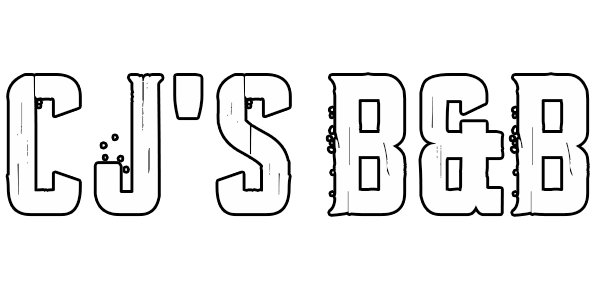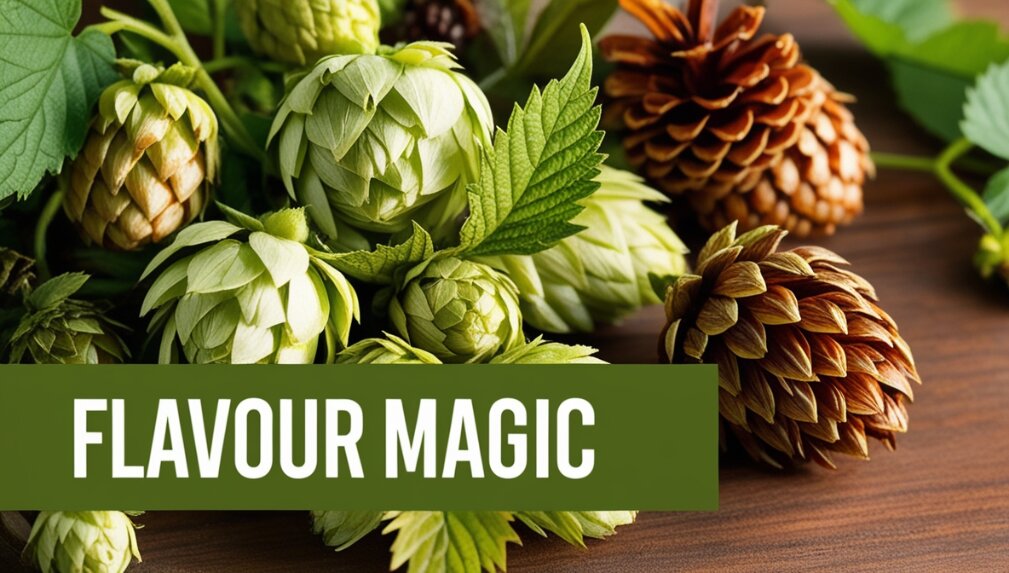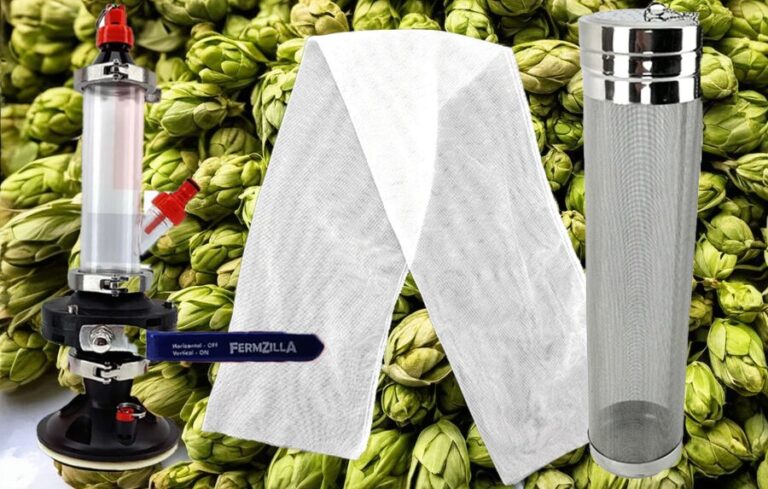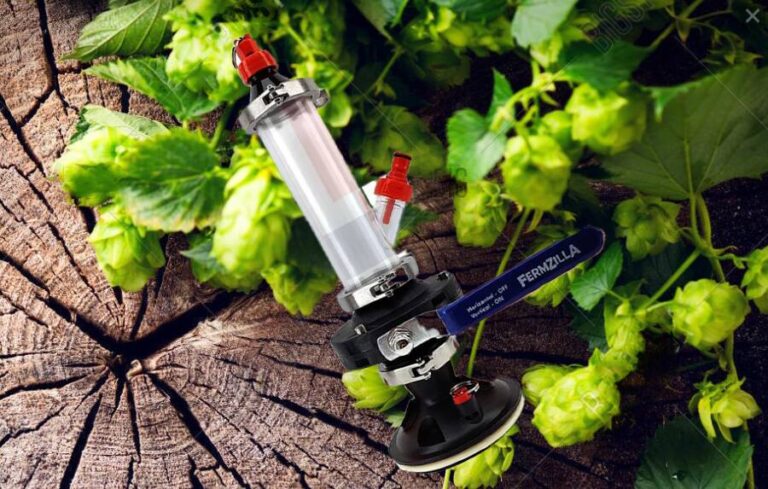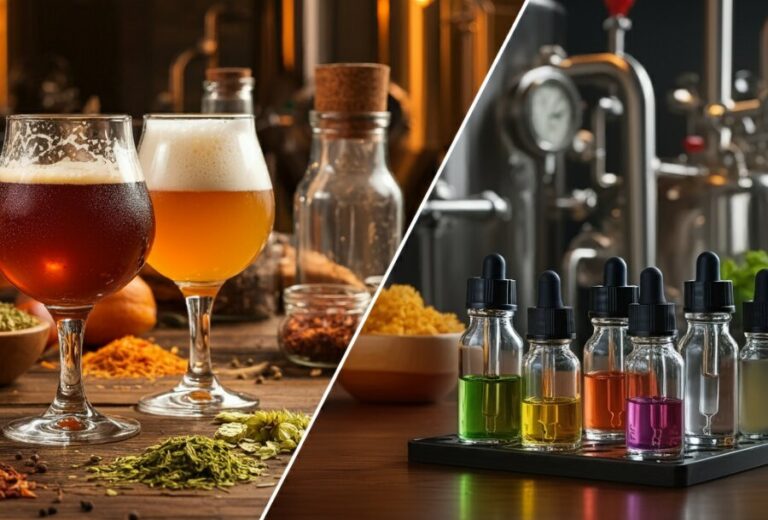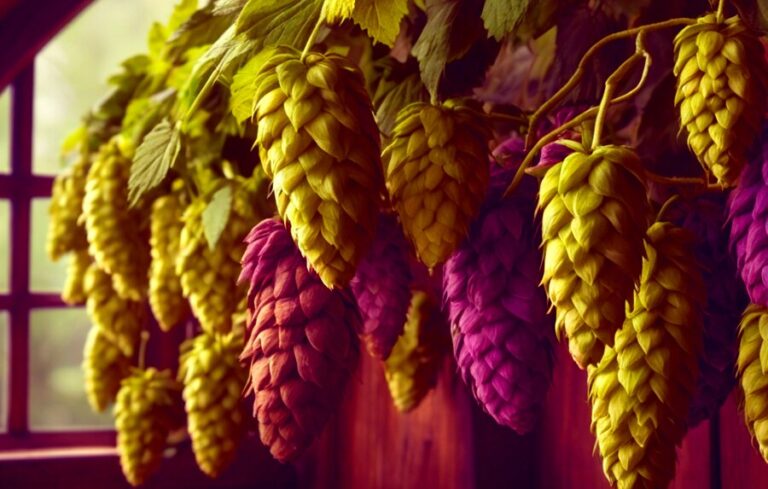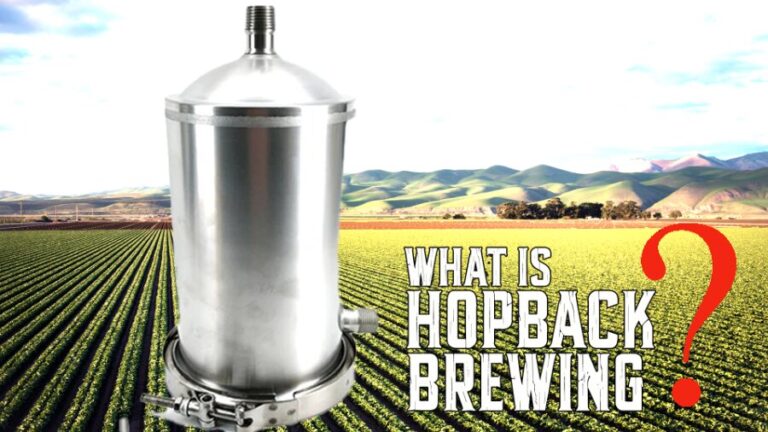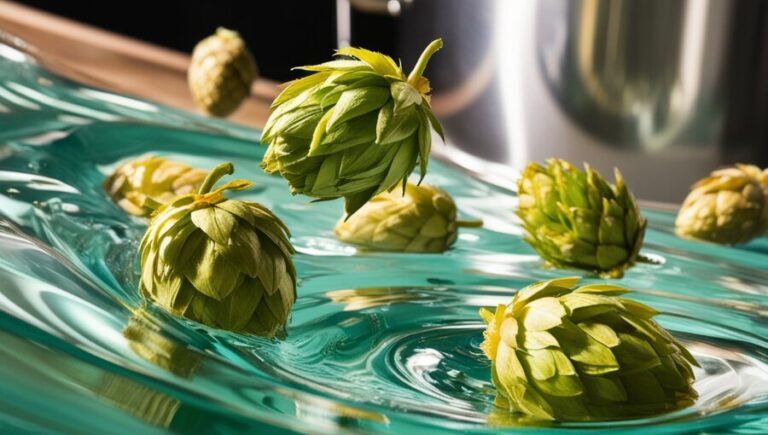Our evaluations and product assessments are conducted using a thorough and unbiased approach. Should you choose to buy any items through our provided links, we might receive a commission Read our disclosures.
Amp Up Your Brew: Flavour and Aroma Tips
Why Hopping Matters
Hey there, fellow homebrewers! If you’re like me, you know that hops are the secret sauce to a killer beer. The way you toss those hops in can make or break your brew. Trust me, I’ve had my fair share of “meh” beers before I nailed down the right techniques.
Hops do more than just add bitterness to balance out the malt’s sweetness. They bring a whole bouquet of flavours and aromas to the party. Timing is everything. Advanced hopping methods like dry hopping, whirlpool hopping, or going for a hop burst, each method can totally change your beer game. Curious about these techniques? Check out our deep dives on dry hopping methods and hop bursting in homebrewing.
Making Your Homebrew Shine with Hops
Picking the right hops and knowing when to use them can turn your homebrew from “okay” to “wow.” Different hops bring different vibes—citrusy, floral, earthy, piney—you name it. Experimenting with various hops can help you find that perfect match for your recipe. Need a cheat sheet? Our guide on hop varieties for flavor has got you covered.
Adding hops at different stages can also crank up the aroma. Tossing them in during the last few minutes of the boil or during fermentation (dry hopping) can make your beer smell like a dream. Here’s a quick rundown of what you get at each stage:
| When to Add Hops | What You Get |
|---|---|
| Early Boil | Bitterness to balance out sweetness |
| Late Boil | Flavour boost without too much bitterness |
| Whirlpool Hopping | Aroma and flavour extraction to the max |
| Dry Hopping | Intense aroma and a fresh kick |
Using these tricks can make your beer rich in flavour and aroma. Being smart about your hops can turn your homebrew into something that really stands out. For more aroma tips, check out our article on maximizing aroma in homebrew.
With a bit of creativity and some trial and error, you can take your homebrewing skills to the next level. Each batch can be a unique, flavourful masterpiece. Cheers to that!
Mastering Advanced Hopping Methods
Diving into advanced hopping methods has taken my homebrewing game to a whole new level. The right hops can turn a good brew into a great one, making each batch a unique adventure.
Flavour Explosion
The type and timing of hop additions can make or break your beer’s flavour. Different hops bring their own unique aromas and tastes, from zesty citrus to earthy herbs. Knowing how each hop variety affects your brew is key to nailing that perfect pint.
Here’s a quick rundown of some popular hops and what they bring to the table:
| Hop Variety | Flavour/Aroma | Best Beer Styles |
|---|---|---|
| Cascade | Floral, citrus | Pale Ales, IPAs |
| Citra | Tropical, grapefruit | IPAs, Pale Ales |
| Saaz | Spicy, earthy | Lagers, Pilsners |
| Amarillo | Orange, floral | IPAs, American Ambers |
| Simcoe | Pine, citrus | IPAs, Pale Ales |
Playing around with different hop combos has let me tweak my brews to perfection. Want more tips on picking hops? Check out our guide on hop varieties for flavor.
Aroma Magic
Aroma hops are the secret sauce for a beer that smells as good as it tastes. Adding these hops later in the brewing process, like during the whirlpool or dry hopping stages, really amps up the aroma.
Here are some tricks I use to get the most out of aroma hops:
- Whirlpool Hopping: Tossing hops in during the whirlpool stage helps extract more aroma without piling on the bitterness. This gives my beer a fragrant finish.
- Dry Hopping: Adding hops during fermentation is a game-changer. It gives the beer a fresh, hoppy aroma that’s hard to beat. Curious about this method? Check out our article on dry hopping methods.
I love mixing and matching different aroma hops to see how they play together and boost my brew’s character. For more on getting the most out of aroma hops, take a look at maximizing aroma in homebrew.
Using advanced hopping methods has let me craft beers with standout flavours and aromas. The more I experiment with hops and methods, the more I fall in love with the art of brewing.

Picking the Right Hops
Choosing hops is like picking the perfect spice for your favorite dish. Each hop variety brings its own zing, making your beer truly unique.
Hops for Different Brews
Different beers need different hops. Here’s a quick guide to some popular hop types and the beers they shine in:
| Hop Variety | Flavour Profile | Best For |
|---|---|---|
| Cascade | Citrus, floral | Pale Ales, IPAs |
| Citra | Tropical fruit, citrus | IPAs, Pale Ales |
| Saaz | Earthy, spicy | Lagers, Pilsners |
| Centennial | Citrus, pine | IPAs, Ales |
| Amarillo | Orange, floral | IPAs, Amber Ales |
| Simcoe | Pine, citrus, earthy | IPAs, Pale Ales |
Want more details on hop flavours? Check out our article on hop varieties for flavor.
Mixing Hops for Extra Flavour
Pairing different hops can take your beer to the next level. Mixing hops lets you balance bitterness, aroma, and flavour, making your brew stand out.
When I mix hops, I think about how their flavours work together. For example, combining a citrusy hop like Citra with a floral hop like Amarillo can create a tasty blend.
Here are some hop pairings to try:
| Primary Hop | Pairing Hop | Resulting Flavour Profile |
|---|---|---|
| Citra | Mosaic | Bright citrus with herbal notes |
| Cascade | Simcoe | Balanced citrus and pine |
| Amarillo | Centennial | Orange and floral complexity |
| Saaz | Hallertau | Earthy and spicy depth |
Experimenting with different combos not only boosts aroma but also makes your beer more interesting. For tips on getting the best aroma, check out our article on maximizing aroma in homebrew.
By picking and pairing hops thoughtfully, you can brew a beer that’s bursting with flavour and aroma. Cheers to making a brew you can be proud of!
Techniques for Enhanced Flavour
Brewing the perfect homebrew is an art, and nothing spices it up like some advanced hopping methods. Let’s talk about two of my favorites: dry hopping and hop bursting.
Dry Hopping Methods
Dry hopping is my go-to for amping up the aroma without making the beer too bitter. You toss in the hops after boiling, usually during fermentation or conditioning. This way, the hops release their essential oils, giving your beer a fresh, hoppy scent.
Here are a few dry hopping methods I’ve tried:
| Method | Description | Best Timing |
|---|---|---|
| Primary Dry Hopping | Adding hops directly to the fermenter. | During fermentation |
| Secondary Dry Hopping | Adding hops to a secondary fermenter. | After primary fermentation |
| Hop Stand | Letting hops steep in hot wort post-boil. | Right after boiling, before cooling |
For more detailed techniques and tips, check out our article on dry hopping methods.
Hop Bursting Techniques
Hop bursting is another trick up my sleeve for packing in hop flavours. You add a ton of hops at the end of the boil, usually in the last 10-15 minutes. This way, you get a lot of hop oils without too much bitterness.
Here’s a quick rundown of hop bursting:
| Step | Description |
|---|---|
| Boil Duration | Shorter boil time (10-15 minutes). |
| Quantity of Hops | Use more hops than usual. |
| Flavour Profile | Intense hop flavour with minimal bitterness. |
For more on hop bursting, check out our article on hop bursting in homebrewing.
Using these hopping techniques, I’ve brewed some seriously flavourful beers. Whether I’m dry hopping or hop bursting, the results are always worth it. I love playing around with different hop varieties and amounts to find new flavours. For more tips on making your brew stand out, check out maximizing aroma in homebrew and hop varieties for flavor.
Experimenting with Hopping
Trying out different hopping techniques can really shake things up in brewing. I’ve played around with methods like double and triple hopping, hop back, and first wort hopping, and they’ve seriously boosted the flavour and aroma of my homebrew.
Double and Triple Hopping
Double and triple hopping means adding hops at several stages during brewing. This gives a more complex hop profile, making the flavour richer. When I use this method, I usually add hops during the boil and then again during fermentation.
| Hopping Technique | What It Is | Flavour Boost |
|---|---|---|
| Double Hopping | Adding hops twice, usually during the boil and fermentation | More aroma and flavour depth |
| Triple Hopping | Adding hops three times: at the boil, mid-boil, and during fermentation | Max aroma and flavour complexity |
With these techniques, the aroma really pops, making it a key part of my brewing process. For more on boosting flavours, check out our article on hop additions for aroma.
Hop Back and First Wort Hopping
Hop back and first wort hopping are two more methods I’ve enjoyed using to create unique flavours.
Hop Back: This involves passing hot wort through a vessel filled with hops right before it goes into the fermenter. This gets the most out of the hop oils, boosting aroma and flavour without adding bitterness.
First Wort Hopping: Here, hops are added to the kettle before the wort is boiled. This keeps the delicate hop flavours while giving the brew a smooth bitterness.
| Hopping Technique | What It Is | Benefits |
|---|---|---|
| Hop Back | Wort passes through hops before fermentation | Boosts aroma, cuts bitterness |
| First Wort Hopping | Hops added to the kettle before boiling | Keeps hop flavour, smooth bitterness |
Each technique has its own special impact on the final product. Using these methods can really take your beer to the next level. For more tips on maximizing aroma in your homebrew, check out our guide on maximizing aroma in homebrew.
Playing around with these advanced hopping methods has totally changed my brewing game. Each method brings something new, letting me tweak the flavours and aromas just how I like them.
Tips for Successful Hopping
Hopping is a game-changer in homebrewing, giving your beer that perfect kick of flavour and aroma. Here are some tips to nail those advanced hopping methods and brew like a pro.
Timing and Quantities
Knowing when to toss in your hops is key to getting the taste you want. Here’s a handy table I use to keep my hop additions on point:
| Hop Addition Stage | Timing (Minutes Before End of Boil) | Flavour/Aroma Impact |
|---|---|---|
| Bittering Hops | 60-90 minutes | Adds bitterness |
| Flavour Hops | 15-30 minutes | Adds flavour |
| Aroma Hops | 0-5 minutes | Adds aroma |
| Dry Hopping | After fermentation | Enhances aroma |
For bittering hops, I chuck them in early to get that strong bitterness. Flavour and aroma hops go in later to keep their essence intact. And yeah, measuring right is crucial—too much can overpower your brew. I often double-check my hop additions for aroma to stay on track.
Balancing Bitterness and Aroma
Striking the right balance between bitterness and aroma is what makes a beer stand out. I always consider the beer style I’m brewing and tweak my hopping accordingly.
Here’s a quick guide I follow for IBUs (International Bitterness Units):
| Beer Style | Recommended IBU Range |
|---|---|
| Light Lager | 8-12 |
| Pale Ale | 40-50 |
| IPA | 50-70 |
| Stout | 30-50 |
Choosing the right hops is also a big deal. Some hops are more about aroma than bitterness. I love using fragrant hops to boost the overall aroma of my brew. Checking out hop varieties for flavor helps me make smart choices.
By keeping an eye on timing, quantities, and balancing bitterness with aroma, I can bring out the best in my homebrew. For more advanced tricks, I might dive into dry hopping methods or whirlpool hopping techniques to amp up the flavour even more.

